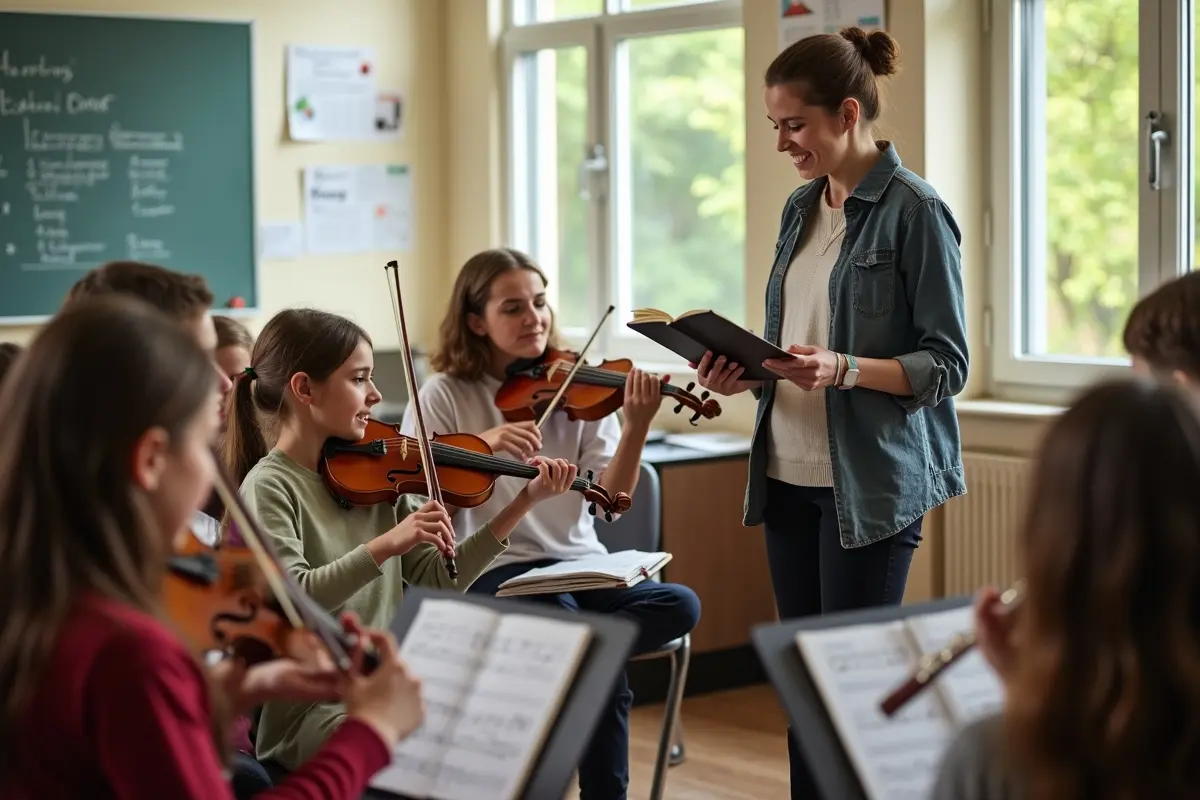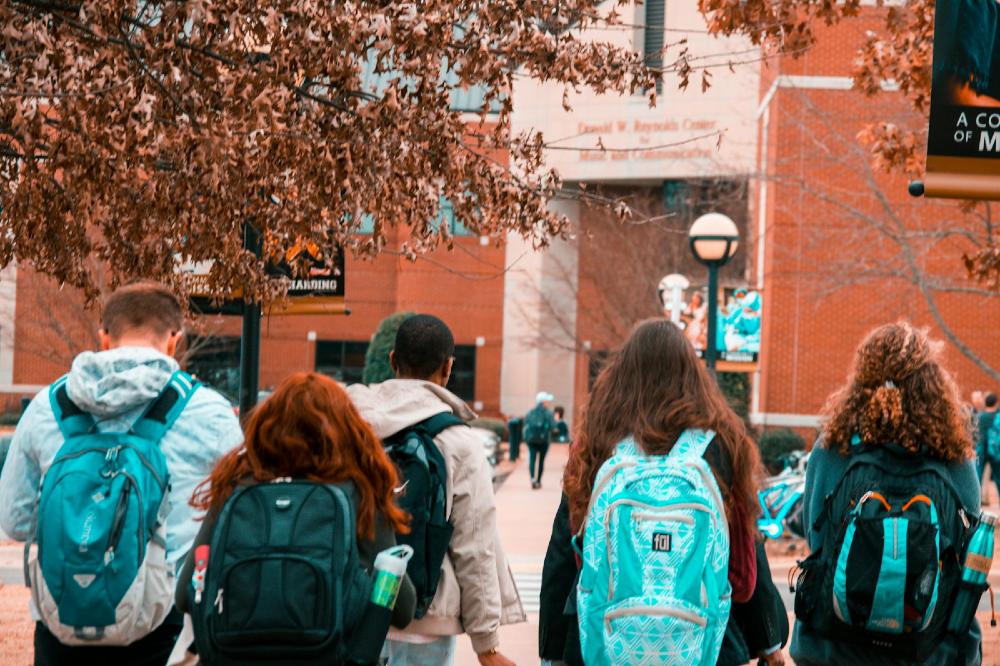Music education is a cornerstone for fostering creativity, boosting academic performance, and nurturing essential life skills in students. Yet, many schools struggle with budget constraints that make providing quality instruments and up-to-date technology a constant challenge. Schools and supporters can help fund instruments and music technology for schools, but effective strategies are key to building sustainable, impactful programs.
A robust music curriculum does more than teach notes and rhythms—it empowers students with confidence, teamwork, discipline, and creative thinking, providing opportunities for self-expression that might not exist elsewhere in the school day.
With studies revealing significant links between participation in music and better outcomes in a range of academic and life skills, ensuring access to instruments and modern technology is vital for success. In the face of limited resources and rising costs, educators and advocates must get creative to ensure every child has the opportunity to engage in music learning.
Understanding the Importance of Music Education
To build a compelling case for support, it’s critical to understand and communicate the profound value of music education. Research also highlights how regular exposure to music can improve memory, auditory skills, and language development. According to the University of Southern California, music education fosters not only academic growth but also essential life skills that extend beyond the classroom.
Beyond academics, participating in band, orchestra, or choir nurtures social integration, emotional well-being, and perseverance, all of which contribute to whole child development. Through music, students often strengthen skills such as leadership, resilience, and collaboration, skills that are essential both in and out of the classroom.
These organizations also emphasize equity by expanding opportunities to all students, regardless of socioeconomic background. It’s not uncommon for music programs to be the reason some students look forward to coming to school every day, offering them a creative outlet and a supportive peer community.
Assessing Current Resources and Needs
Any effective funding approach starts with a clear understanding of the program’s current status. Educators and music directors should systematically inventory all available instruments, technology (such as recording equipment and music software), and related teaching materials.
This inventory helps identify what is in good working order, what needs repair, and what gaps exist—whether in instruments, sheet music, or classroom technology. Identifying equipment in need of repair or replacement and listing technology upgrades provides a structured baseline for fundraising and grant applications that demonstrates need to potential donors or grant makers in a persuasive way.
Involving students and teachers in this assessment can uncover overlooked needs and foster a sense of ownership in the program’s future. For example, teachers might discover that students need adaptive instruments or special technology for accessibility, while students might share feedback on how specific tools or resources could enhance their learning experience. Engaging the entire school community in this process also builds excitement for future improvements.
Exploring Grant Opportunities
There are numerous grants offered by foundations, arts organizations, and corporate sponsors aiming to bridge the gap in school music funding. Other well-known organizations and corporations also sponsor music education by offering financial support, equipment, or software at reduced or no additional cost to schools.
Thoroughly research available grants, ensuring you align applications with the mission and priorities of each funder. Many funders require detailed descriptions of need, impact, and sustainability—so preparing supporting data and compelling stories from students or teachers can make all the difference.
Remember that smaller, local community foundations may be more accessible and invested in the success of neighborhood schools than larger national organizations. Persistence and attention to grant timelines are key, and forming a grant-writing team can spread the workload and introduce new perspectives.
Engaging the Community
A strong sense of community can be a game-changer for school music programs. Hosting benefit concerts, themed talent shows, and creative crowdfunding campaigns energizes families, alumni, and local supporters to contribute. Community-hosted events featuring student musicians are excellent opportunities to showcase progress and celebrate achievements, while also serving as platforms for fundraising and partnership development.
Highlighting student performances and success stories in local media or school newsletters can also build momentum and inspire donations. Effective outreach includes inviting local media personalities, government officials, or business leaders, as their involvement can amplify the program’s visibility.
Creating volunteer opportunities and recognition programs for those who contribute fosters an ongoing relationship between the school, its families, and the larger community. Maintaining transparency about goals and progress further strengthens trust and support.
Partnering with Local Businesses
Local businesses can play a vital role in supporting music education. Schools can approach music stores, retailers, restaurants, or service providers to sponsor events, donate products, or contribute financially.
Whether through matching campaigns, equipment discounts, or in-kind donations, establishing strong business-school partnerships can create a more stable funding stream. Showcase the benefits of partnership—such as public recognition at concerts, co-branded marketing, or direct involvement with student programs—to encourage ongoing goodwill and involvement.
Building long-term relationships with key business supporters might also include offering exclusive event access, allowing business representatives to present awards to students, or inviting them to serve on advisory boards. Celebrating successful collaborations publicly helps sustain these partnerships and encourages other local businesses to become involved as well.
Implementing Fundraising Initiatives
Creative, well-publicized fundraising initiatives can energize the entire school community. Consider:
- Silent auctions featuring goods and services donated by local businesses, which not only raise funds but showcase community spirit and talent.
- “Sponsor a Student” programs, where community members subsidize individual instrument needs or cover costs for underserved students, so that every child has a chance to participate.
- Merchandise sales, such as T-shirts, posters, or recordings featuring student performances, can create lasting keepsakes and raise awareness for the program.
These initiatives not only secure funds but also increase program visibility, building excitement and awareness among students and parents alike. Diversity in fundraising—from online drives to community cookouts—ensures robustness and broadens the donor base. Leveraging digital platforms for campaigns can also capture support from alumni and music lovers beyond the immediate area, multiplying fundraising success.
Advocating for Budget Allocations
Effective advocacy within the school or district is essential to secure stable, long-term funding. Present well-documented evidence of music’s academic and developmental benefits to administrators and school boards.
Offering research-based presentations or testimonials from students and parents helps personalize the case for investment. Demonstrating the relationship between strong arts programs and student achievement can persuade decision-makers to prioritize and increase budget allocations for music education.
Continuously engaging with district leaders, attending school board meetings, and joining wider advocacy networks—both online and locally—strengthen your program’s voice. Even small increases in annual budgets, combined with outside fundraising, can make a dramatic difference over time.
Utilizing Technology to Reduce Costs
Technology can help music programs achieve more with less. Free or low-cost music creation software, online learning platforms, and virtual instrument libraries offer valuable educational tools without the expense of traditional resources.
Many reputable software developers provide educator discounts or grants for classroom use. Schools can supplement physical instruments with apps or web platforms, opening new worlds of digital composition and interactive skill-building that support all learning styles.
Additionally, hybrid and flipped classroom approaches, utilizing recorded lessons and virtual ensembles, can stretch existing staff resources while delivering high-quality instruction. These models also ensure students continue learning music in remote or hybrid school settings, maintaining engagement during unprecedented disruptions.
Conclusion
Launching and sustaining a strong school music program is a multifaceted effort, but it is both achievable and transformational. By understanding music’s unique value, conducting thorough needs assessments, seeking grant support, forging powerful community and business alliances, employing creative fundraising tactics, leveraging school advocacy, and adopting purposeful technology, schools can secure vibrant, future-ready music programs for all students.
Strategic partnerships and community-driven action will keep the melody alive in classrooms now and for generations to come. With dedication and the right strategies, every school has the opportunity to provide creative, inclusive, and inspiring educational experiences through music—for today’s students and the musicians of tomorrow.




